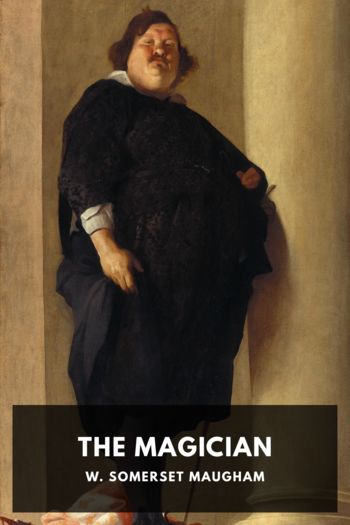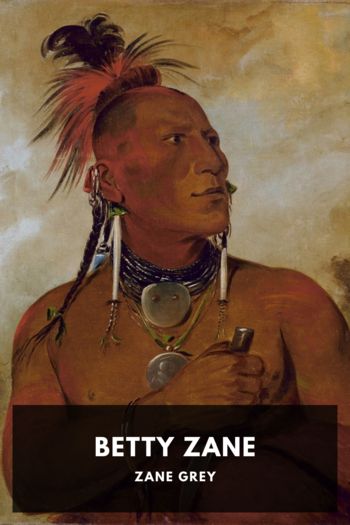Genre Other. Page - 272

Description
The baby of an English aristocratic family becomes orphaned in the equatorial African jungle, and is raised by apes. As he grows up he discovers he is human, and very different from his anthropoid companions. He learns and develops human traits, yet retains his primitive skills and physical prowess. As he comes into contact with other humans, conflict, adventure, wonder, and triumph result. To those he encounters, Tarzan becomes a symbol of the natural man, contrasting with the shortcomings and perfidies of human society.

Description
Goodwill in the seventeenth century Polish Commonwealth has been stretched thin due to the nobility’s perceived and real oppression of the less well-off members. When the situation reaches its inevitable breaking point, it sparks the taking up of arms by the Cossacks against the Polish nobility and a spiral of violence that engulfs the entire state. This background provides the canvas for vividly painted narratives of heroism and heartbreak of both the knights and the hetmans swept up in the struggle.
Henryk Sienkiewicz had spent most of his adult life as a journalist and editor, but turned his attention back to historical fiction in an attempt to lift the spirits and imbue a sense of nationalism to the partitioned Poland of the nineteenth century. With Fire and Sword is the first of a trilogy of novels dealing with the events of the Khmelnytsky Uprising, and weaves fictional characters and events in among historical fact. While there is some contention about the fairness of the portrayal of Polish and Ukrainian belligerents, the novel certainly isn’t one-sided: all factions indulge in brutal violence in an attempt to sway the tide of war, and their grievances are clearly depicted.
The initial serialization and later publication of the novel proved hugely popular, and in Poland the Trilogy has remained so ever since. In 1999, the novel was the subject of Poland’s then most expensive film, following the previously filmed later books. This edition is based on the 1898 translation by Jeremiah Curtin, who also translated Sienkiewicz’s later (and perhaps more internationally recognized) Quo Vadis.

Description
In a small Mormon community in southern Utah, Jane Withersteen, a young, unmarried Mormon woman faces growing pressure to marry a local elder of her church. Elder Tull, a polygamist, already has two wives and seeks to marry Jane not just for her beauty, but to take control of the ranch her late father passed on to her.
Jane’s resistance to marriage only serves to increase the mounting resentment against “Gentiles” (non-Mormons) in the area. Bern Venters, one of Jane Withersteen’s ranch hands and potential suitor, becomes the focus of this resentment and is nearly killed by Elder Tull and his men before a mysterious rider interrupts the procedure. The rider, a man named Lassiter, is a gunslinger known for his exploits in other Mormon settlements further north.
Lassiter’s intercession on Venters’ behalf sets off a chain reaction of threats, violence, theft, and murder as Jane Withersteen fights to maintain both her ranch and her independence.
First published in 1912, Riders of the Purple Sage is considered to have played a prominent role in shaping the Western genre. It was Zane Grey’s best-selling book and has remained popular ever since.

Description
Two close friends, Proteus and Valentine, are saying their goodbyes in the streets of Verona. Valentine plans to travel to Milan and discover the world, but Proteus wants to stay with Julia, a woman he loves. While in Milan, Valintine falls in love with the duke’s daughter, Sylvia, and plans to elope with her. Antonio, Proteus’ father, later orders his son to join Valentine in Milan. Before leaving, Proteus exchanges rings and vows of undying love with Julia. When Proteus enters the aristocratic courts of Milan, he instantly falls in love with Sylia and forgets all about Julia. The love triangle between Sylvia, Proteus, and Valentine will test the loyalty of friendship.
This Standard Ebooks production is based on William George Clark and William Aldis Wright’s 1887 Victoria edition, which is taken from the Globe edition.

Description
Jeff Rand, a private detective, is skeptical when he is employed by Gladys Fleming to evaluate her recently acquired gun collection, which happens to contain a dark secret. The more facts he uncovers, the more interesting the story becomes. Gun dealers, butlers, wives and cops all become suspects in the investigation of a mysterious death. The book is rich with detailed descriptions of the many different guns that star in this tale. This is the only murder-mystery written by Piper, who was mostly known for his science fiction novels.

Description
The Dead Secret is Wilkie Collins’ fourth novel. It first appeared in serial form in Charles Dickens’ Household Words magazine during 1856. Like many of Collins’ books, it features incidents and themes which were considered to be sensational at the time; in this case, sex before marriage, illegitimacy, and fraud.
The novel opens with a scene at Porthgenna Tower, a mansion in Cornwall, where the lady of the house, Mrs. Treverton, is dying. On her deathbed, she tries to force her maidservant, Sarah Leeson, to swear that she will give a letter Mrs. Treverton has written to her husband, Captain Treverton, once she is dead. The letter reveals an important family secret in which Sarah is deeply involved and which she consequently is desperately unwilling to pass on. Mrs. Treverton succeeds in making Sarah swear not to destroy the letter or remove it from the house, but dies before making the young woman swear to give the letter to the Captain. Sarah therefore finds a place to conceal it within the house.
The rest of the novel deals with Rosamond, the Treverton’s daughter, who grows to adulthood and marries Leonard Franklin, a young man of a well-to-do family, who is afflicted with blindness. Franklin purchases Porthgenna Tower after the Captain’s death, and the couple plan to move into the property and renovate it. Doing so, however, means that they are likely to uncover the hidden letter concealing the family secret.
While critics don’t consider The Dead Secret to be one of Collins’ best novels, it contains some of the same elements of mystery and suspense as The Woman in White and The Moonstone, and much of his characteristic wry humor.

Description
The Return of Tarzan was first published in the pulp New Story Magazine between June and December of 1913, and later published as a novel in 1915.
The story picks up shortly after the events in the first book as Tarzan is traveling to France from the United States. While on the ship, he intervenes in the plots of a man named Nikolas Rokoff and his companion Alexis Paulvitch. Upon reaching Paris, Rokoff executes the first of many revenge plots, which plunge Tarzan into a series of adventures.

Description
In Paris, surgeon Arthur Burdon and his fiancé are introduced to Oliver Haddo, a wealthy Englishman from an old family who claims to be a magician trained in the occult. At first they are unconvinced and irritated by Haddo’s boasts; however he soon demonstrates his powers in more and more fateful ways.
The character of Oliver Haddo is an unflattering caricature of the English occultist Alistair Crowley, whom Maugham had met while living in Paris. Crowley himself wrote a review in Vanity Fair in which he accused Maugham of plagiarizing various other novels, signing off as “Oliver Haddo.” Most critics dismissed these allegations.

Description
Betty Zane, published in 1903, was Zane Grey’s first novel. It tells the romanticized story of Grey’s great-great-aunt, who made a miraculous dash under fire to save a frontier fort from Indian attack.
Fort Henry sat on the site of present-day Wheeling, West Virginia. One of a series of fortifications built to protect frontier settlers, it was commanded by Colonel Ebenezer Zane, and was the center of a small community where Colonel’s brothers and his sister Betty lived. The fort survived two sieges by Native Americans, first in 1777 and again in 1782. In the 1782 siege the attacking tribes were joined by British soldiers; and it is this siege, and the events leading up to it, that are recounted in Betty Zane.
Grey claimed to derive the facts in his story from the personal notebook, preserved in his family, of his great-grandfather Ebenezer Zane, but it’s impossible for readers to distinguish historical fact, the supposed contents of the notebook, and the Grey’s own imagination. Certainly some aspects of the tale, like Betty’s romantic involvements, are entirely fictionalized. But equally certainly, other major aspects of the tale, in particular Betty’s heroism during the siege, come straight from the pages of history.

Description
What Is Art? is an 1897 philosophical treatise by Leo Tolstoy that lays out his philosophy of aesthetics. Rejecting notions of aesthetics that center around beauty, Tolstoy instead posits that art is defined by its role in transmitting feelings between human beings. Furthermore, he argues that the quality of art is not assessed by the pleasure it gives, but whether the feelings the art evokes align with the meaning of life revealed by a given society’s religious perception. In line with his spiritual views set out in The Kingdom of God Is Within You, Tolstoy argues that the proper purpose of art is to transmit feelings of human unity and “to set up, in place of the existing reign of force, that kingdom of God, i.e. of love, which we all recognize to be the highest aim of human life.”
Tolstoy makes a number of unconventional aesthetic judgments in the course of the book, dismissing such works as Wagner’s operas, Romeo and Juliet, and his own past works like War and Peace and Anna Karenina as “bad art.” In turn, he praises such works as Dickens’ A Christmas Carol and Hugo’s Les Misérables as “examples of the highest art, flowing from the love of God and the love of man.”